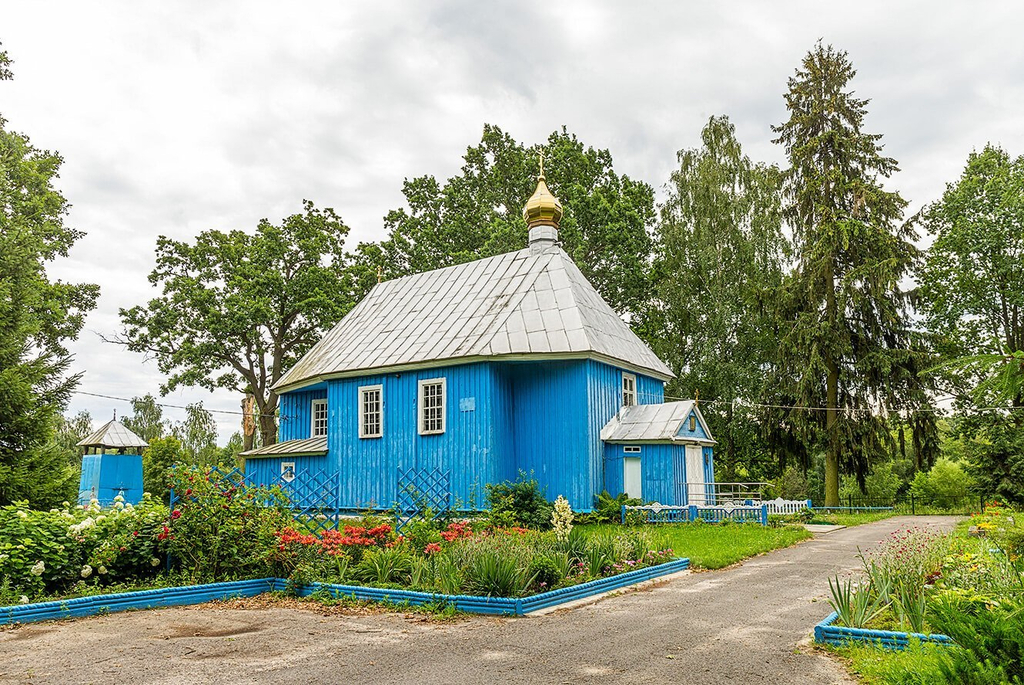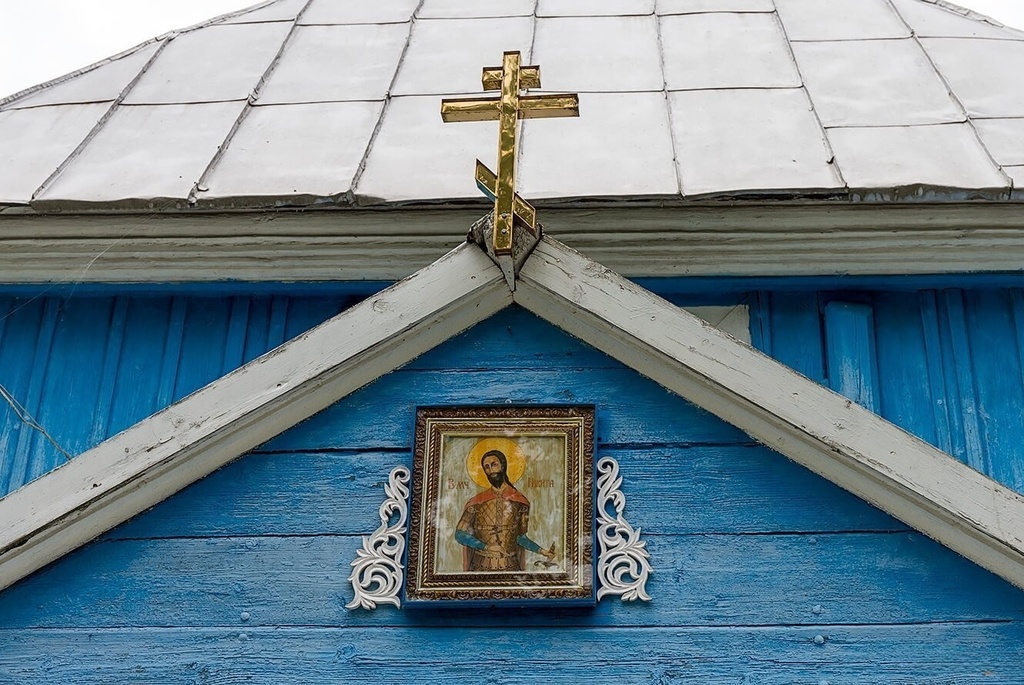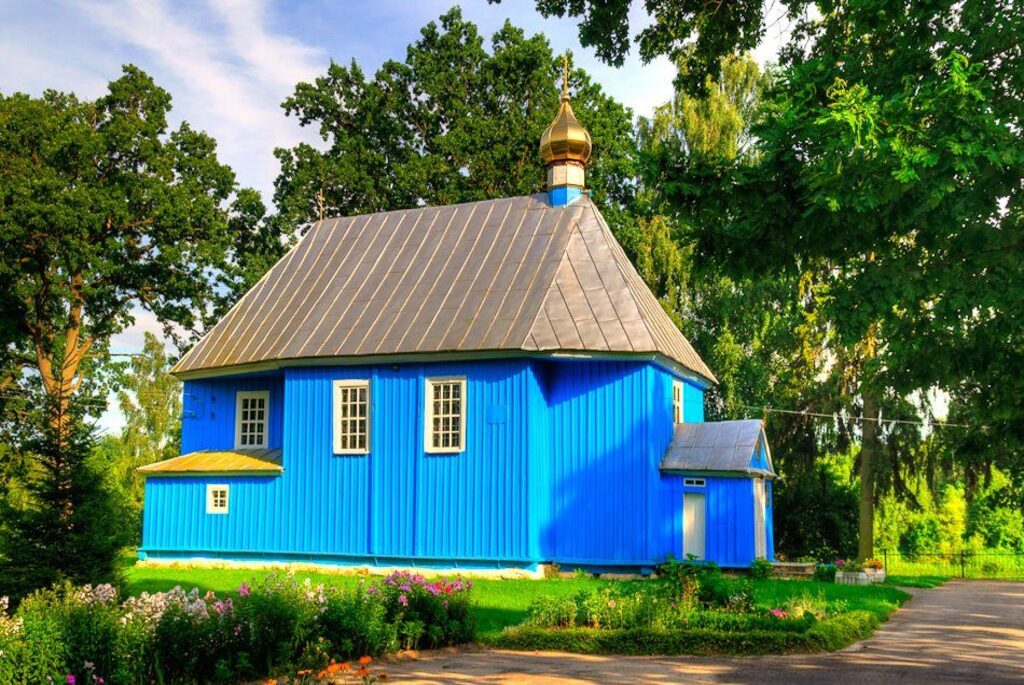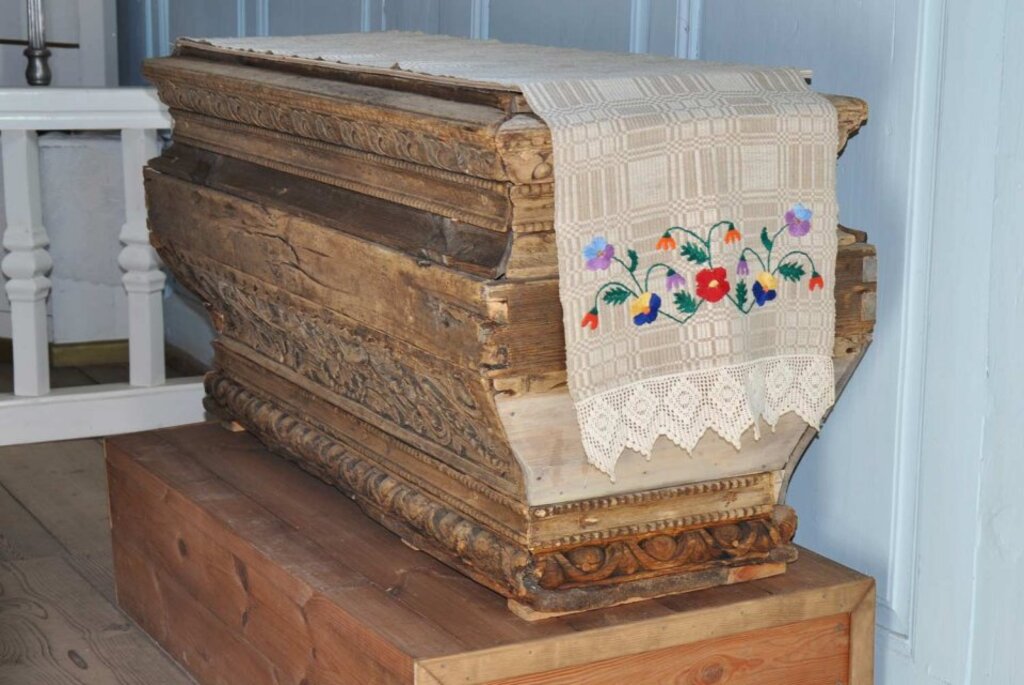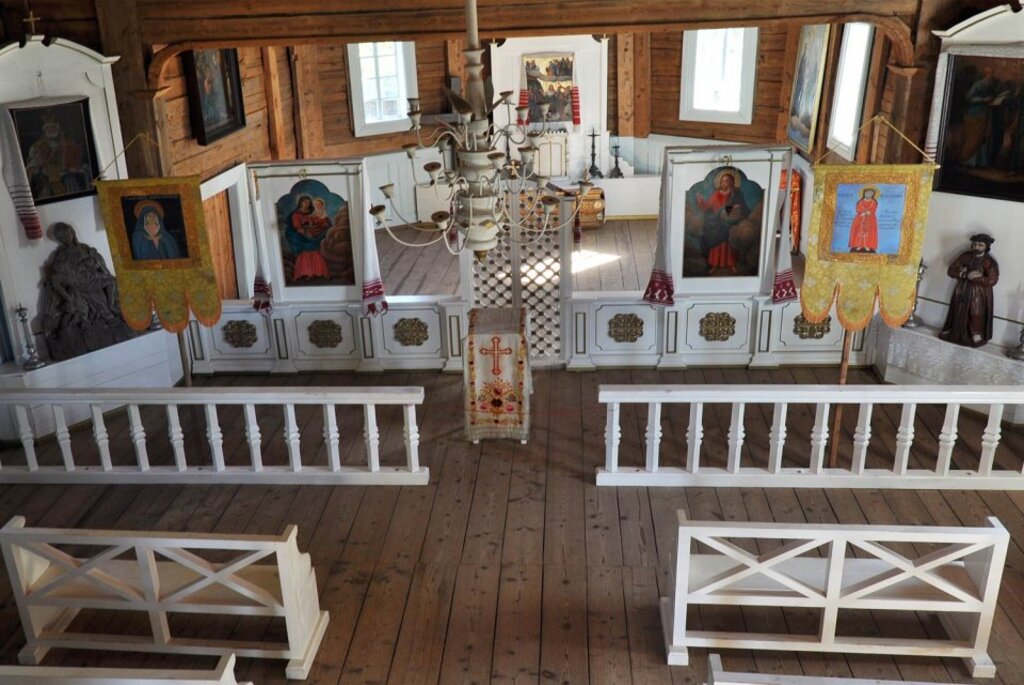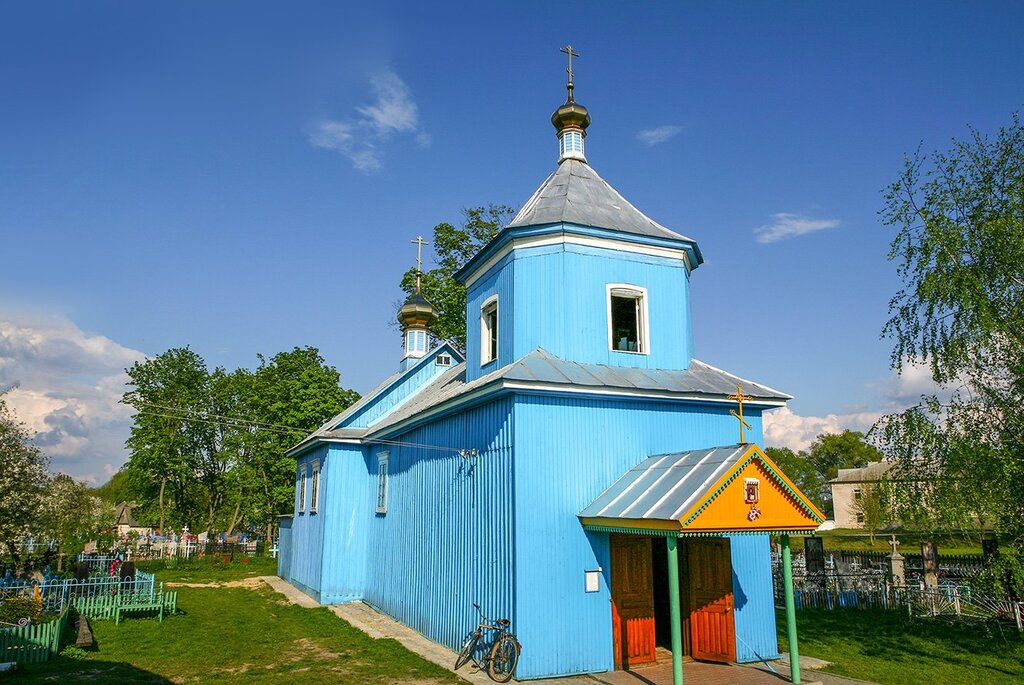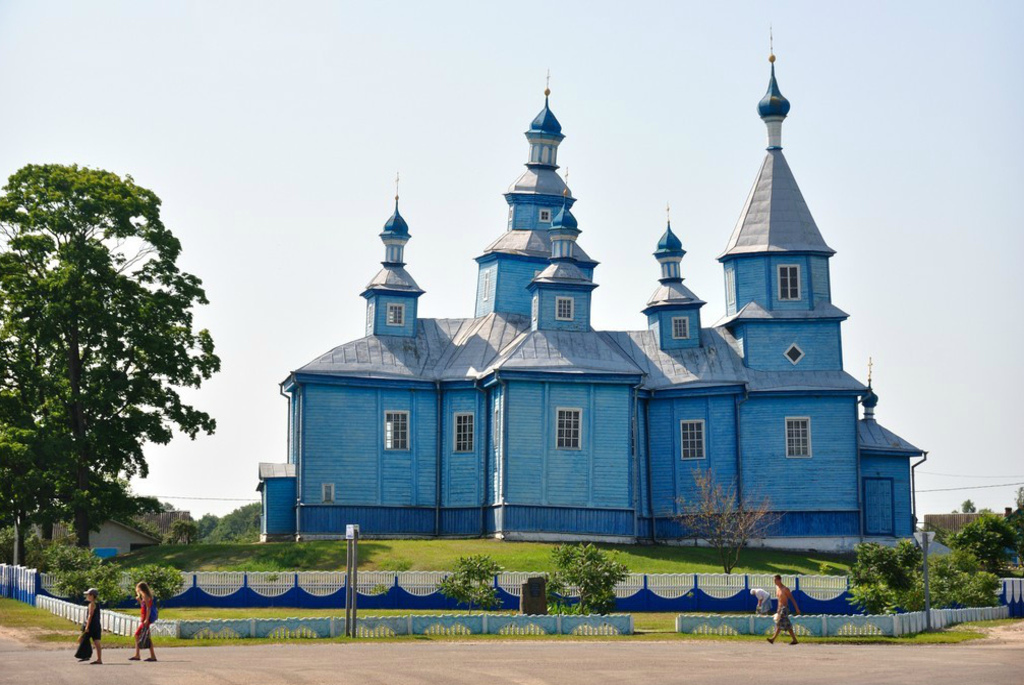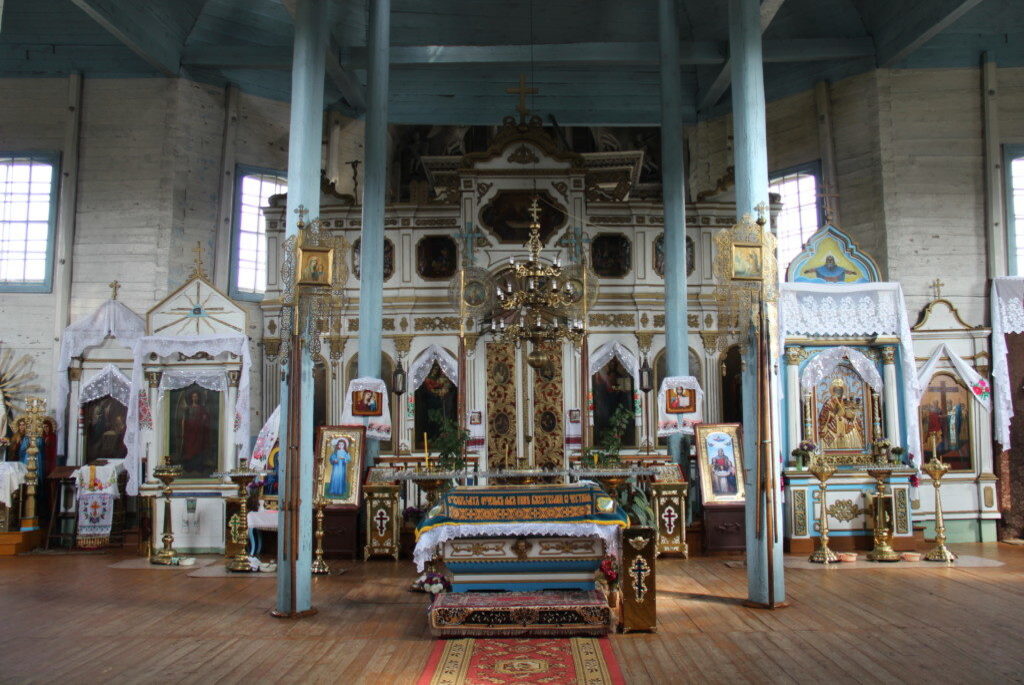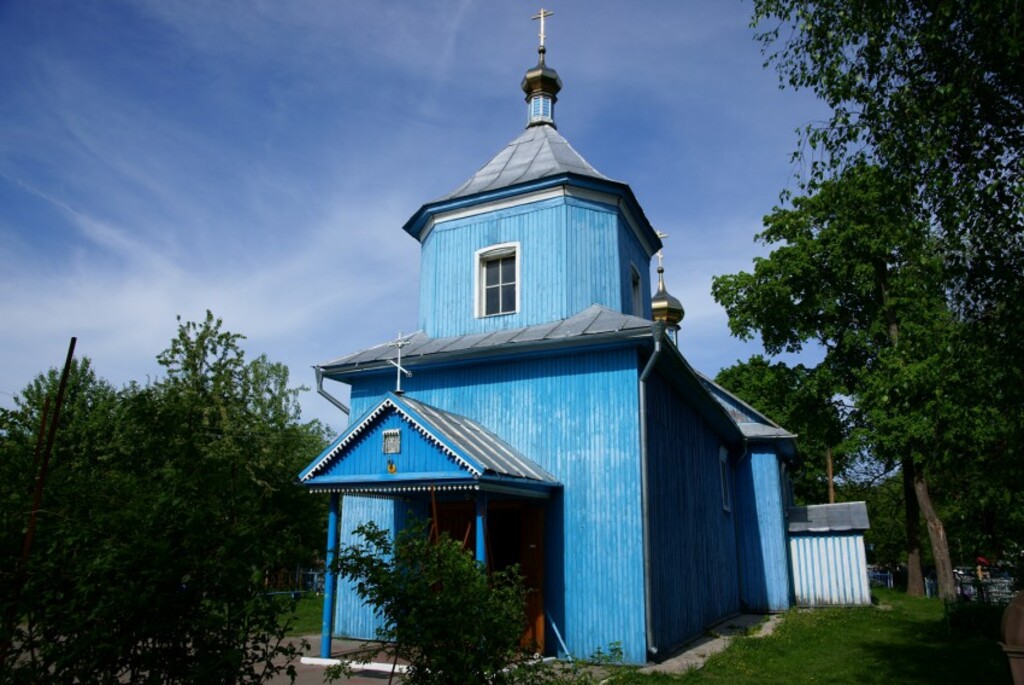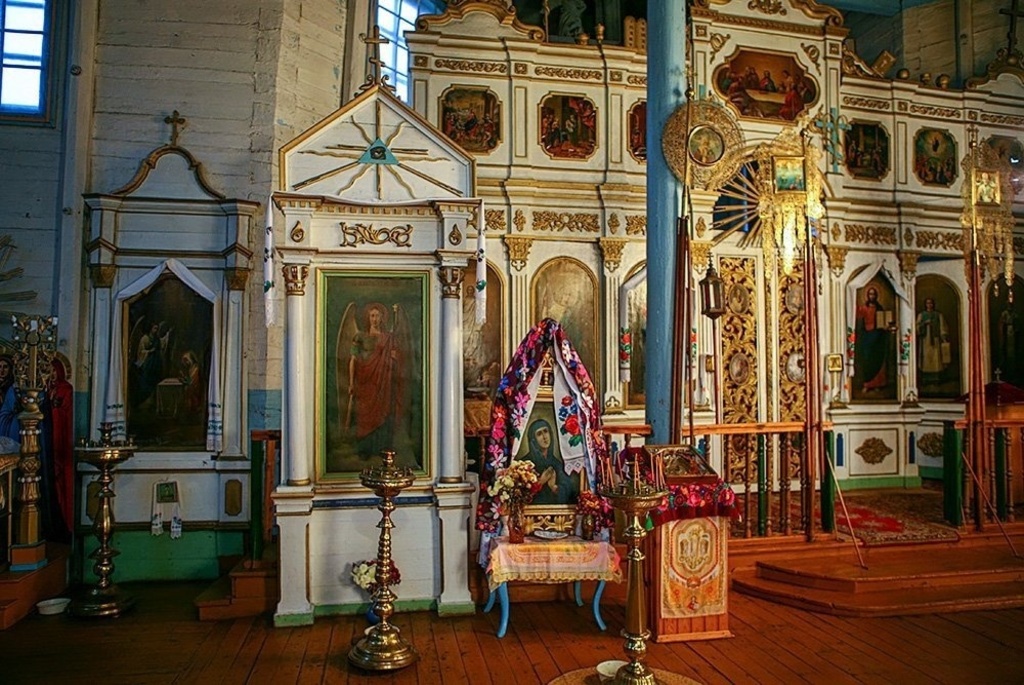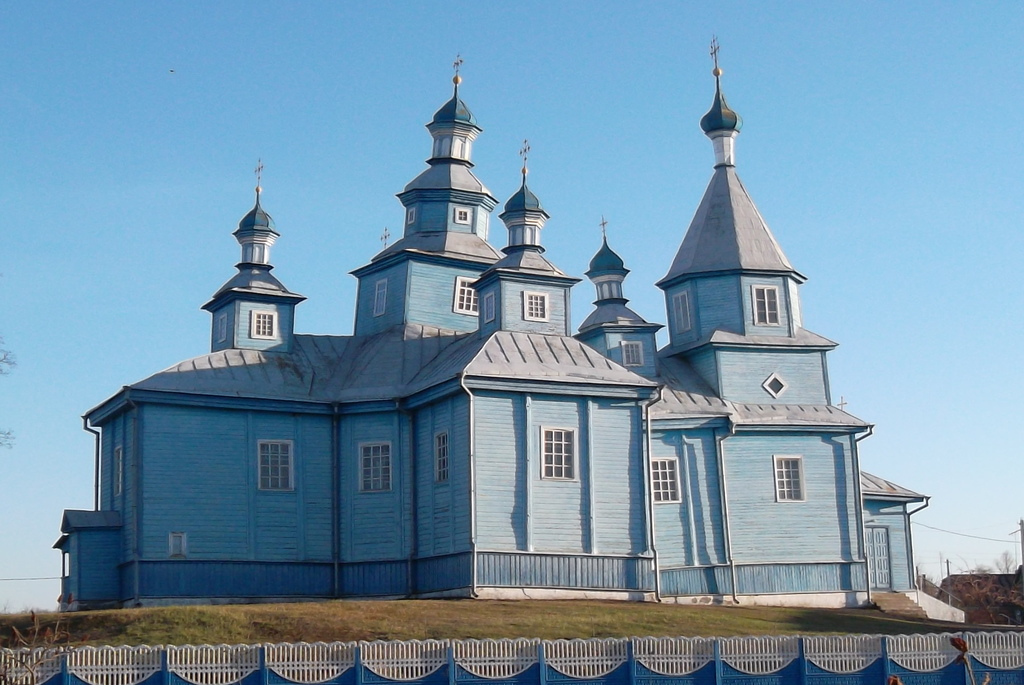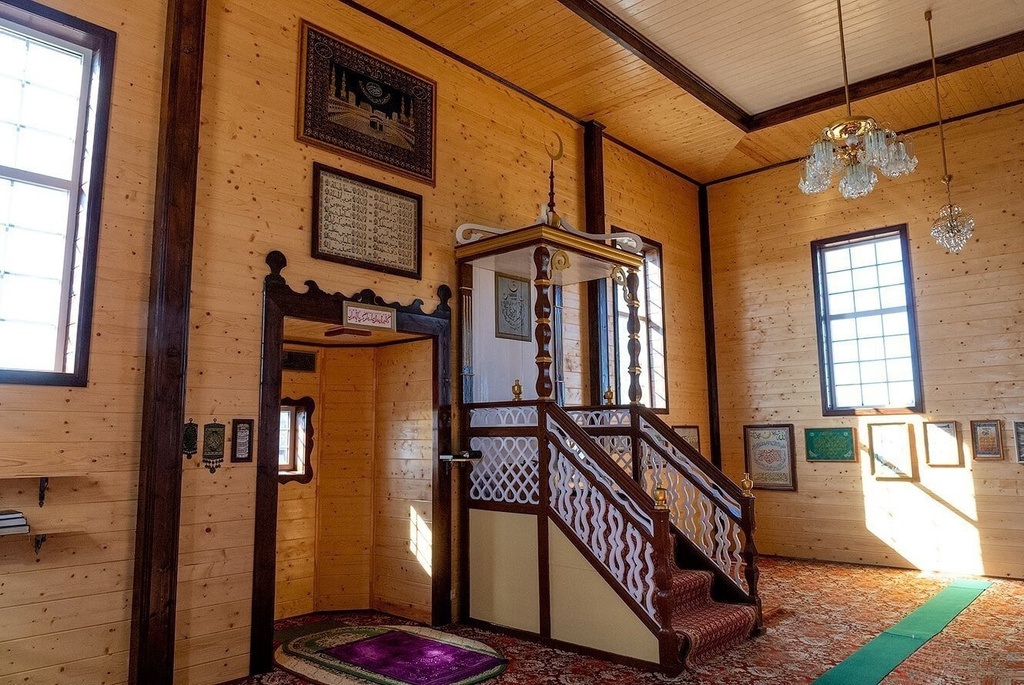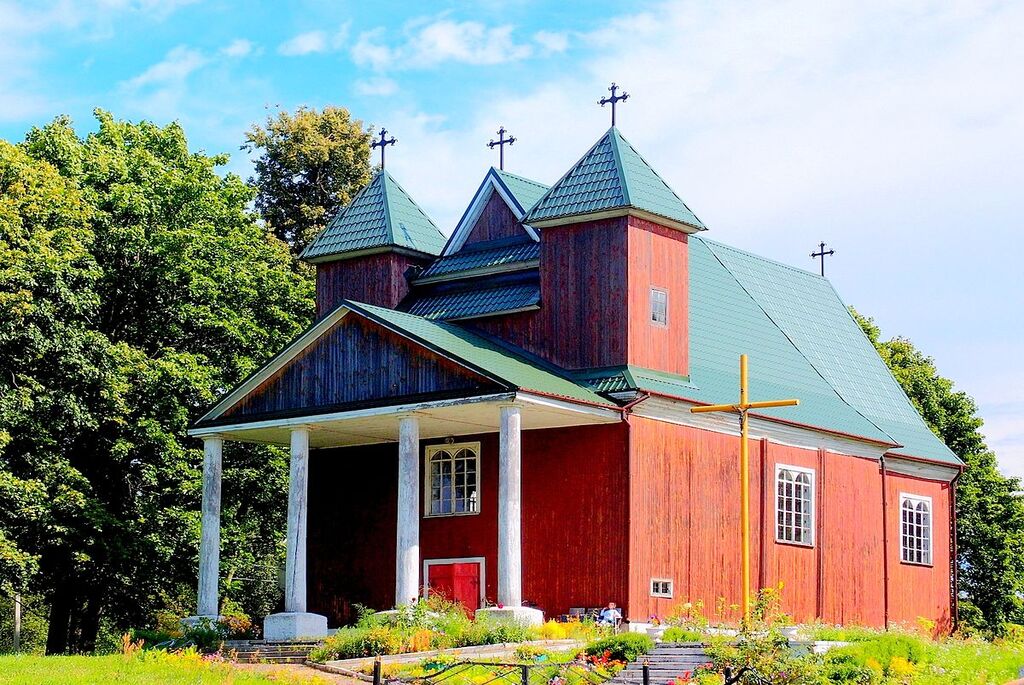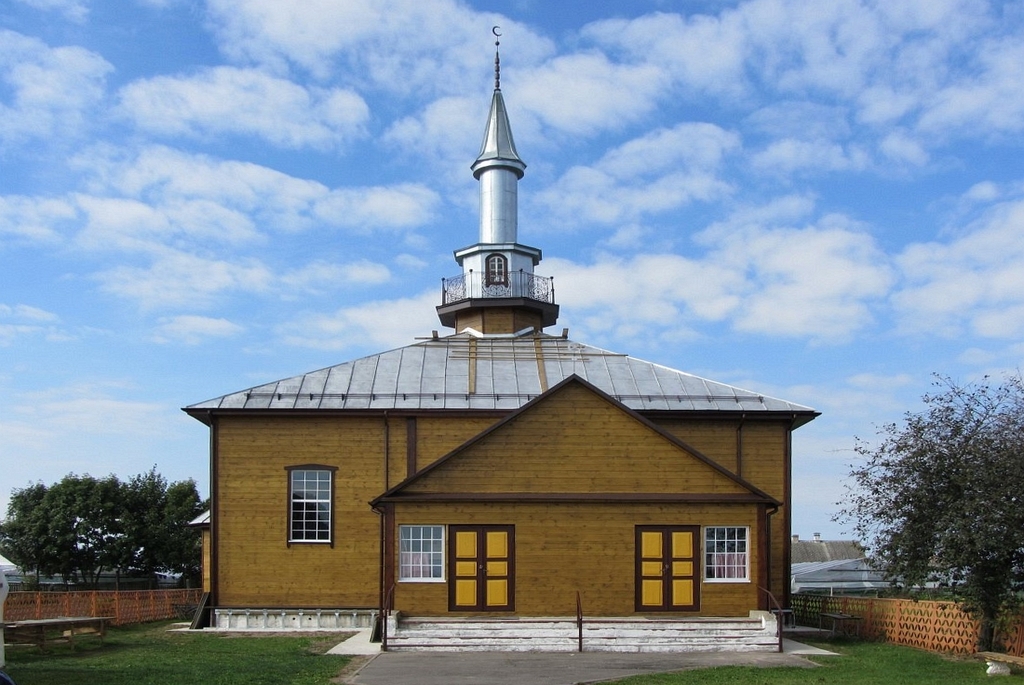Why Wooden?
For centuries, wood was the most accessible building material. Wooden churches were erected quickly, often by local craftsmen without formal education. Many of them were built without a single nail, using wooden dowels and special jointing techniques. These structures are not just religious buildings, but examples of folk engineering and spiritual labor.
St. Nikita’s Church in Zditovo: The Oldest Surviving One
Perhaps the oldest functioning wooden church in Belarus is St. Nikita’s Church in Zditovo (Brest Region). It was built in 1502 on the banks of the Mukhavets River in the traditions of western Polesian architecture. Over more than five centuries, the church survived wars and destruction, remaining intact during both World Wars. Religious services are still held there today. Its exterior is modest, but its historical significance is immense – the church is even a candidate for inclusion in the UNESCO World Heritage List.
The Intercession Church from Lognovichi: Keeper of Icons and Color
Another important monument is the Intercession Church of the 18th century, relocated to the Museum of Folk Architecture and Rural Life in Strochitsy near Minsk. Built without nails, with a Baroque-style turret above the entrance and a unique Uniate layout, it stands out for its natural, unpainted wooden façade – a rarity among Belarusian wooden churches. Inside, visitors will find preserved wooden icons and sculptures, offering insights into the religious art of that time.
Polesia’s Churches: Humble and Resilient
Polesian wooden churches form a distinct group. One example is St. Nicholas Church in Kozhan-Horodok (built in 1818), located on a mound said to have been created by captured French soldiers. It’s an impressive five-domed church built by illiterate yet talented craftsmen without using nails. The bell tower added in the 19th century somewhat disrupted its symmetry, but gave the building a unique character.
Another example is the Church of All Saints in Turov, built in the 19th century on a town cemetery. The site features stone crosses, said to have floated there by river, along with icons and relics of saints. Turov offers a vivid connection between religious tradition and the natural environment.
Not Only Churches
Wooden religious heritage in Belarus includes mosques and Catholic churches as well. A prime example is the mosque in Iwye, built in 1882. It survived World War II and the Soviet era and continues to serve worshippers. It is the only active wooden mosque of its kind in Belarus.
Also, noteworthy is the Catholic Сhurch in Khokhlovo, built in 1738. In the 18th century, it served over a thousand parishioners. Later reconstructed in classical style, today it impresses with symmetry and a hand-carved wooden altar.
Modern Times and Preservation
Despite their historical value, wooden churches remain vulnerable. They are difficult to restore and even harder to preserve in original condition. Many have been dismantled or destroyed by fire. Yet public interest is growing: tourist routes are emerging, and these monuments are being added to national heritage lists.
New wooden churches are also being built. One such example is the Holy Trinity Church in Minsk, consecrated in 2006. It was built in a retrospective Russian style without nails, using moss as insulation – a nod to traditional techniques.
Why Visit the Wooden Churches of Belarus?
- They are history embodied in wood, not stone.
- They offer architecture without grandeur, but with deep inner beauty.
- They are testimonies of faith and skill, preserved through centuries.
- They are rare and living monuments you can see, hear, and feel.
Wooden churches of Belarus are more than places of worship. They are bridges between past and present, between the soul of the people and the land they inhabit. As long as these churches stand, so does the memory of those who built them, prayed within their walls, believed, and hoped. And each of us can touch this living history – all it takes is a visit.
